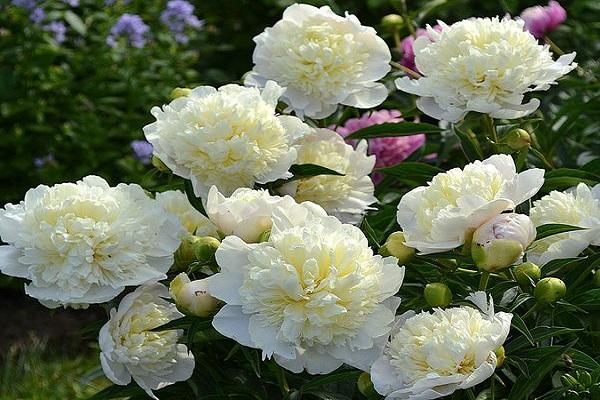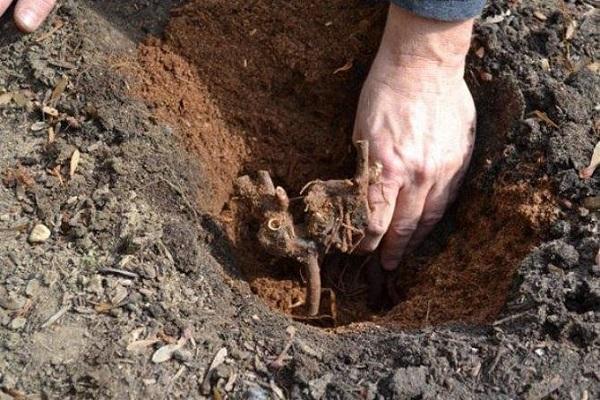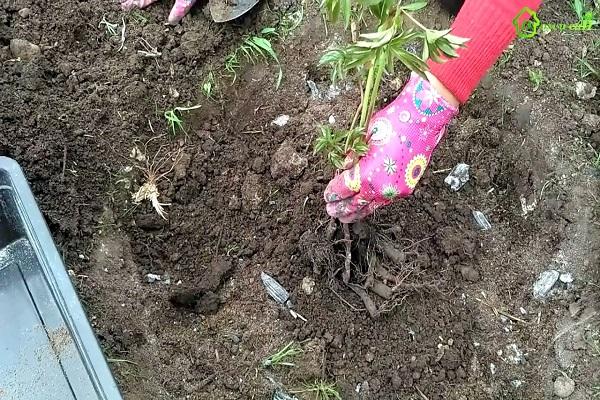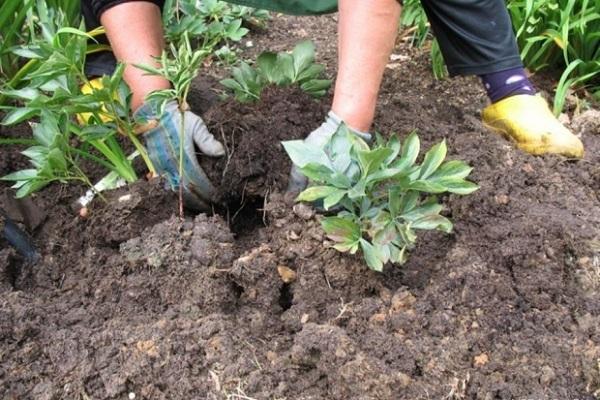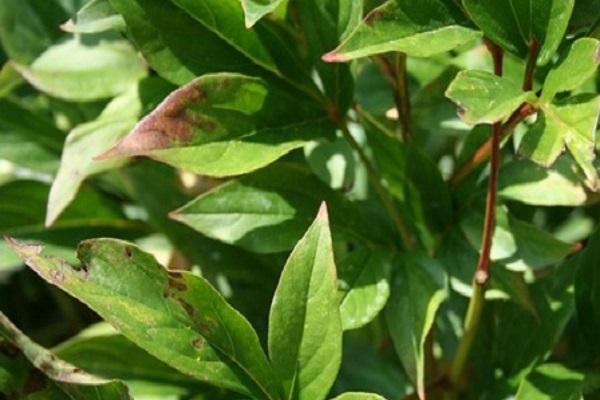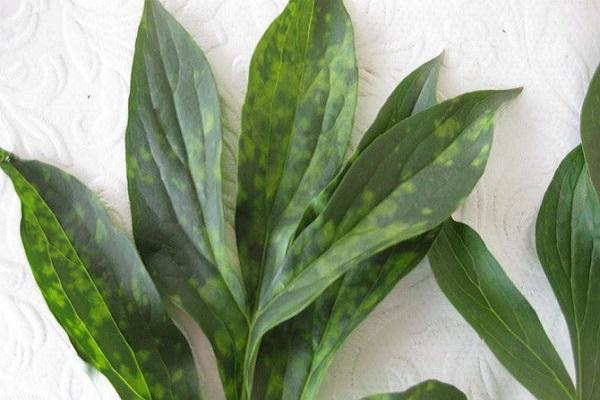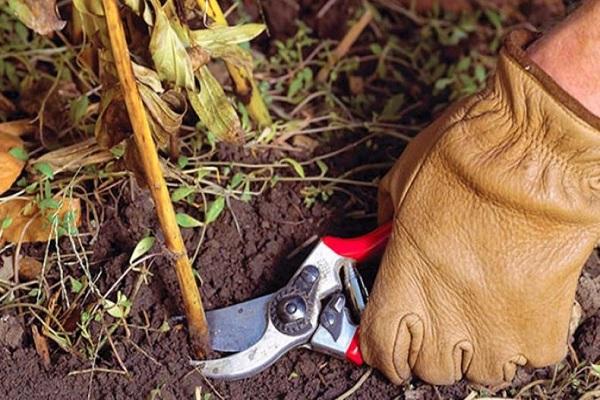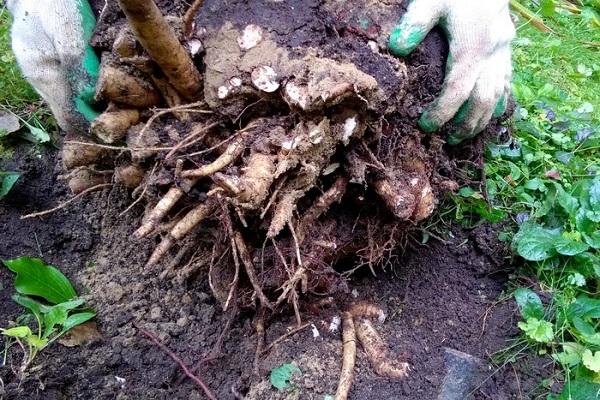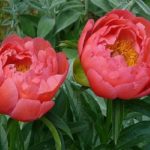Peonies include a wide variety of varieties, Duchess de Nemours being one of the most commonly used. This is primarily due to the appearance of the buds and ease of growing. However, failure to follow the rules of care often leads to disease and death of the plant.
Peony is a popular type of plant; Duchess de Nemours creates the necessary design for landscape compositions. The plant does not require complex care and can be grown both for cutting and for garden decoration.
Description and features
The Duchesse de Nemours culture is distinguished by its airy buds and delicate white color. This type of peonies will decorate the site. The inflorescences on peonies are large and can reach a diameter of up to 16 cm. The bush is up to 1 meter, spreading. The buds are double and can bloom for a long time.
Features of the plant:
- the culture can withstand temperature changes;
- can be used for cutting;
- the milky-flowering variety is resistant to diseases;
- the bush can grow in one place for up to 10 years and bloom profusely.
The flowers are dense and do not fall off even after cutting the crop into a bouquet.
History of selection
This type of peony was bred by the French breeder Calot. This variety first appeared in the 19th century, but gradually gained great popularity. The peony variety is the most commonly used and has repeatedly won first place due to its beauty.
Landing
In order for peonies to develop, it is necessary to properly prepare the planting site and the required type of soil.
Selecting a location
The place where the plant is planted must be protected from the wind, since frequent gusts can damage the stems and lead to premature shedding of the buds. The plant should also receive plenty of sunlight. Otherwise, the culture will stop blooming and develop normally. It is also not recommended to plant peonies near trees and buildings, which can block the normal growth of the crop with their shadow.
Soil requirements
The soil must contain a large amount of nutritional components, since the plant is planted in one place of growth for a long period. The soil should be loose, airy and free of clay.Before planting, it is recommended to prepare a nutrient mixture, which will consist of 2 parts soil, 1 part humus, 1 part peat, 1 part river sand. The resulting composition is used as the main one in the planting process.
Important. In order for the plant to develop, it is necessary to use leaf humus, which contains all the necessary minerals for the normal development of peonies..
Deadlines
Peony is planted in open ground most often from mid-August to mid-September. This period is considered the most suitable for normal adaptation of the plant before winter. Peony can be replanted in the spring, but such a bush becomes very sick and does not bloom in the first few years after planting.
Planting scheme
To plant, you must perform the following steps:
- dig a hole up to 50 cm deep;
- the hole is left for several days;
- after which pebbles or large chips are placed at the bottom of the pit as drainage;
- the seedling is carefully placed in the soil and the roots are straightened;
- The seedling is sprinkled with the nutrient mixture and compacted a little.
After the plant is planted, it must be watered with warm water.
Care
Proper care is the main condition for the development of peony.
Watering
The plant must be watered every 5 days, as the flower prefers a moist environment. However, excessive moisture can lead to mold. Therefore, the bushes are watered every 5 days; one specimen requires up to 10 liters of warm water.
Loosening and weeding
Weeding is carried out as necessary; weeds are removed manually. Loosening the soil must be carried out before each watering and during frequent rains in order to saturate the soil with oxygen and reduce the formation of diseases.
Top dressing
In the first 2 years after planting, the peony is not fertilized.In subsequent years, feeding is carried out regularly according to the following scheme:
- In the spring, potassium and nitrogen are introduced by the root method;
- during the period of bud formation, it is necessary to add phosphorus fertilizers;
- after the crop has flowered, a solution of bird droppings is added;
- In the fall, you need to use compost or humus to prepare for winter.
Special fertilizers for flowering plants can be used; such substances are applied by the root method.
Diseases and pests
The plant is resistant to diseases, but with improper care the following problems appear.
Rust
This type of disease occurs after flowering during the hot period. It appears in the form of the formation of dark rusty spots on the leaves. The plant begins to weaken and quickly withers. The disease quickly spreads to healthy bushes and can lead to the death of large areas in a short period of time.
To prevent this type of problem, the bushes are sprayed with a solution of laundry soap. When the first symptoms of the disease appear, the damaged crop must be sprayed with Bordeaux mixture.
Brown spot
The disease most often appears in the first half of summer. It looks like large spots on the leaves. It can affect not only leaves, but also stems. The disease quickly spreads throughout the plant and leads to the death of the crop. At the first symptoms, the bush must be treated with copper sulfate.
If the disease has spread throughout the bush, the crop is removed.
Ring mosaic
The disease is viral and quickly affects the plant. The disease manifests itself in the formation of light stripes and spots on leaves and shoots.Very often, symptoms can appear in certain areas of the bush, so such shoots must be removed. The damaged bush must be treated with Alirin; if symptoms continue to appear, the plant should be destroyed.
Aphid
Pests feed on the sap of young shoots and often occur on peonies. You can remove insects using a soap solution that is sprayed on the bush.
Trimming
Peonies are pruned as follows:
- The first stage is the removal of faded buds along with the stems.
- The second stage is pruning the bush before winter. This type of circumcision is performed at the end of September. The shoots are removed and the cut area is sprinkled with ash.
Failure to prune the bush in the fall leads to the appearance of diseases and pests that lay their eggs in last year’s shoots.
Important. Do not remove green leaves from the bush, this will reduce the supply of nutrients to the roots of the plant.
Reproduction
The culture tends to reproduce as follows:
- Rhizome division is a common method of plant propagation. A root that is at least 4-5 years old is used, which is divided and planted as an independent plant.
- Root cutting method. For such propagation, a root shoot that contains a bud is used. The cuttings are planted in the ground and watered regularly. The plant begins to bloom only 3-4 years after planting.
- Trimming a bush. In early spring, using a sharp shovel, cut off the top layer of the root system, which is planted in the ground. The residual root is restored due to dormant buds.
- Bush layering - used to avoid damaging the roots of the bush.In early spring, the peony is hilled up and regularly watered; in the fall, you can use ready-made layering for propagation; this method is used for old bushes that are at least 8 years old.
Each gardener selects a method for propagating peonies.
Important. Peony Duchess de Nemours does not propagate by seeds, unlike other types of crops.
Use Cases
Peonies can be used as the main plant on the site; the bushes are large. Also, this type of peony can be used as an additional decoration in compositions with other types of plants.
Peonies are among the crops that can very often be found in any garden. The plant is undemanding in care, Duchess de Nemours is resistant to diseases and tolerates low temperatures.

